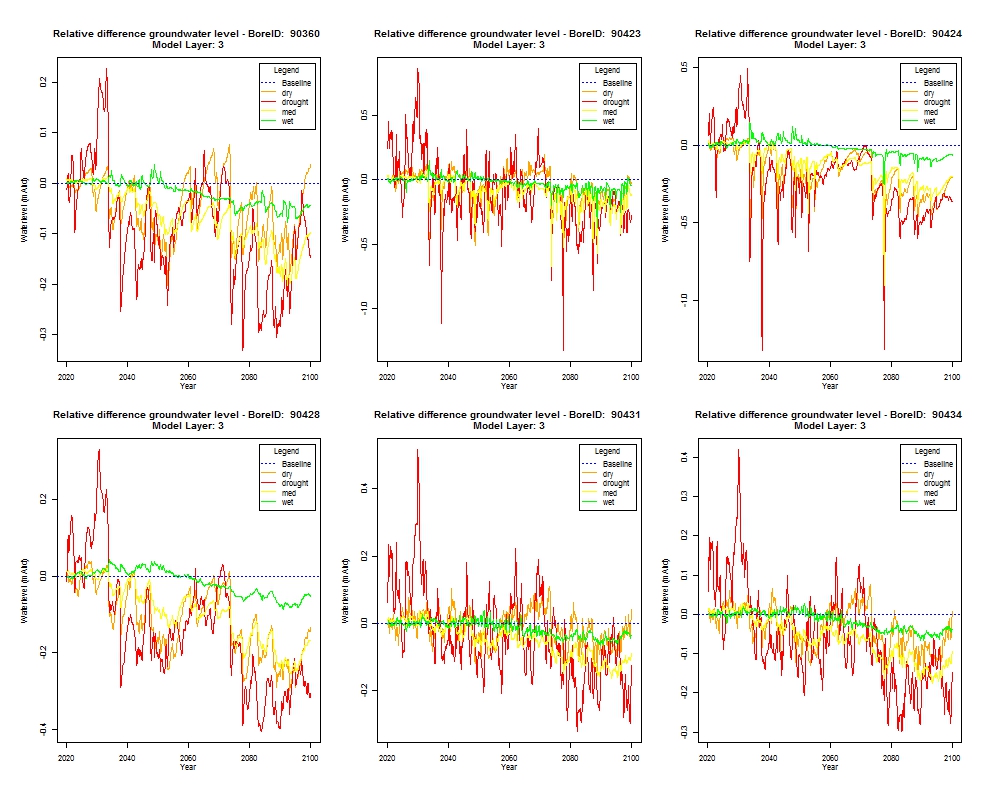Groundwater Information management
We have been engaged performing groundwater investigations with the Victorian Fisheries Authority (vfa) to inform site selection for a proposed regional fish hatchery in Northern Victoria;
(see the updates on this project).
This included groundwater sampling from state monitoring bores; hydrogeological assessments; aquifer suitability investigation; water quality/chemistry interpretation; result mapping and report completion.
Spatial Ventures specialises in groundwater data management, streamlining database updates, integration of hydrogeological information and data visualisation (see our flyer).
This includes
- spatial or complex sql querying or procedures, database programming
- data formatting, developing database ingestion strategies and automation
- data cleansing, waterlevel time-series outlier detection
- time-series and trend analysis (e.g. Mann-Kendall Trend), statistics
- data integration of hydrostratigraphy, lithology and borelog information
- aquifer-framework assessments
- automated hydrograph plotting
We have been heavily involved in maintaining the National Groundwater Information System, Aquifer framework (BOM) and supported the design of aquifer boundaries, 3D aquifer geometries and hydrogeology models (published as PDF).
Similarly, we maintained the Groundwater dependent Ecosystem (GDE) Atlas, based on national assessments and regional state-based analyses of aquatic, terrestrial and subterranean ecosystem information.

Groundwater modelling support
Our experience with groundwater modelling extends over the development of steady-state and transient model solutions, and generating model input layers as well as performance statistics. Intensive support was provided to the Geologcial Survey of Victoria, when developing the 2015 Gippsland Groundwater model (pdf) and associated drawdown estimates for defined scenarios. This involved using information from the Victorian Aquifer Framework (VAF), studying local hydrogeology, hydraulic characteristics, borehole/aquifer intercepts, acquisition of pumping data, incorporating finer scaled coal-model data, and spatial model layer design.
Further analytical expertise comprises looking at time-series data, such as rainfall or waterlevels, produce plots of head time-curves (visualising trace or model performance) and statistics describing model prediction performance (e.g. Rmse and Scaled Rmse computed in R). We are experienced in working with modelling software packages based on Modflow (2005), PMWin and Groundwater Vistas.

Experience with PEST
Solving numerical equations often requires iterative processes, which can be addressed by PEST: A model-independent parameter optimiser used for performing model calibration – the process of estimating model parameters to match known conditions of the aquifer. PEST offers parallel processing, simultaneous model runs can be performed significantly reducing processing/solution time for parameter estimation, especially for transient model calibration. PEST has the ability to consider uncertainty, which is used to describe the potential variability of a model calibration and therefore the uncertainty of the model prediction. It can identify the probabilistic behaviour of the model complexity, which cannot be captured by the calibration process.






